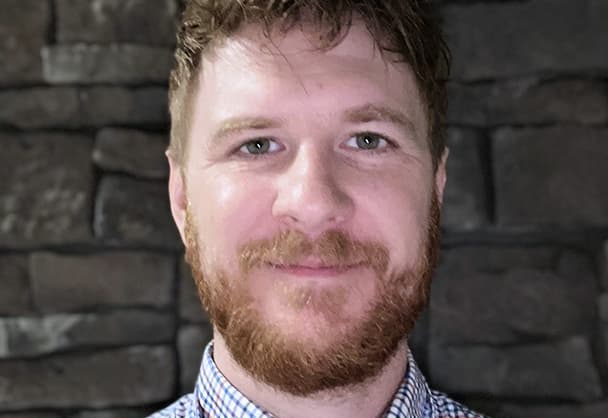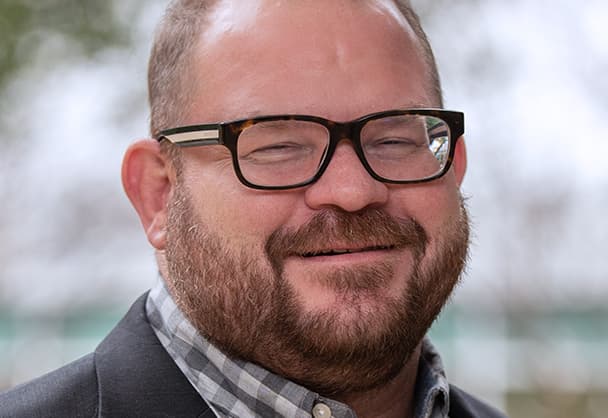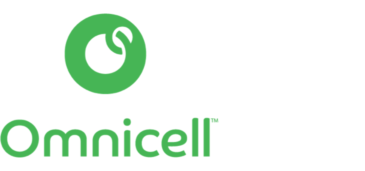SPONSORED CONTENT
The devastating double-whammy of Medicare Part B payment cuts and COVID-19 has again highlighted the 340B program’s significance to hospital finance. Once relegated to the hospital’s basement pharmacy, the 340B program is increasingly a topic of boardroom and C-suite discussions.
In the latest episode of Omnicell’s The Future of Pharmacy podcast, learn how health systems can leverage a vibrant, pharmacy-finance partnership to drive successful 340B programs, and allow pharmacy staff more time to focus on patient care. Find out why 340B program management has evolved, the program challenges that health systems still face, and the data and operational complexities that necessitate a cross-functional approach.
Host:
Ken Perez, Vice President, Healthcare Policy and Government Affairs, Omnicell
Guest experts:
- Eric Iorfido, PharmD, 340B Program Manager, Penn Highlands DuBois
- Charles Hirner, RPh, Senior Director, Omnicell 340B Operations

Eric Iorfido, PharmD 
Charles Hirner, RPh
Episode Highlights
What are some 340B program dynamics that have led us to the increased complexity?
Charlie Hirner: The 340B program was initially set up as an actual physical inventory within pharmacies. So, the pharmacy within the hospital would have a 340B inventory and a non-340B inventory. Based on whether the pharmacy was dispensing to inpatient or outpatient, they could pick the stock accordingly.
That approach became too complex over time with the spread of contract pharmacies and greater compliance and auditing requirements. Organizations realized they needed to move to a stock replacement program, which led to the advent of virtual inventories.
Today, every pharmacy, whether it’s in the hospital or a contract pharmacy, is organized so that their physical inventory is typically considered non-340B inventory. It’s at the point of dispense where it becomes 340B and is replenished via a virtual inventory stock replacement.
What do you see as a primary benefit of the 340B program to your health system?
Eric Iorfido: We’re located across several small, rural communities. We’re able to provide advanced care through endocrinology, cardiovascular, neurology, rheumatology, oncology practices, and so forth, through the benefit of the 340B program. If we didn’t have this advanced care, families would be burdened with the expense and time of driving several hours for surgery or a pulmonology visit.
How do you balance the patient care and standard pharmacy operations with the financial aspects of the 340B program?
Eric Iorfido: I can think of two examples. First, we identify patients in need, those who are uninsured or underinsured, and who could benefit. For instance, a patient may get treated in the ER for cardiovascular disease or diabetic management, and two weeks later, they’ll be back at the hospital. We know our care card program can help them. They’ll be getting their medications cheaper, become more compliant, and in turn, decrease ER visits and admissions. That’s one way our 340B savings directly impact patient care.
Second, the 340B program has been a driver for us to improve processes across the board, such as charging, ordering, and our outpatient documentation system. For instance, through the 340B auditing process, we identified physicians using paper charts where notes may be incomplete. This was resulting in potential misses for prescriptions that are otherwise 340B-program eligible. We were able to address these gaps fairly quickly and improve our clinical operations.
How does pharmacy influence physician groups to ensure they chart orders better?
Eric Iorfido: It can be a painful process, getting physicians who may have been in practice for 30 years, for example, to change their documentation behaviors. But we were very fortunate to have the backing from senior management. Having that support from the C-suite is every bit as critical as having 340B program staffing. You need that total buy-in system-wide if you have any hope of accomplishing your 340B goals.
What current challenges are 340B covered entities facing?
Charlie Hirner: There are several major issues. One is increased pressure from pharma manufacturers to limit the scope of contract pharmacy. While there’s still strong support for the 340B program from Congress and at the grassroots level, the downward pressure from pharma limiting the ability to order products is very powerful and can impact patient access to drugs.
The COVID-19 pandemic is another challenge. It’s led to a two percent shift from retail to mail order pharmacy, which is causing prescriptions to move out of normal contract pharmacy networks into mail order pharmacies. COVID also has led to an increase in telemedicine, which creates more of those charting issues that Eric spoke of, and provides additional opportunities to show continuance of care for patients.
Eric Iorfido: The manufacturer restrictions have put a huge burden on us, especially on insulin. They’ve pretty much wiped out every insulin on the market. We have a fairly expansive care card program, in place more than 10 years with our community pharmacy partners, and those patients are reliant on paying a certain price for their insulin through the program. The manufacturer restrictions are forcing covered entities like us to find creative, alternative ways to help our patients.
We’re fortunate to have a few entity-owned pharmacies that can still purchase and provide insulin products to patients. But at the same time, we know this is taking business away from independent pharmacy stores and our partners in the community, and that’s not how we envision operating.
How has Penn Highlands developed a strong pharmacy-finance relationship around the 340B program?
Eric Iorfido: Since the beginning, our biggest advocate has been our Chief Financial Officer. He saw the benefit, supported the program vision, and helped us to quickly drive to scale. For example, we grew from about 30 child sites to about 110 in under two years. And when we’ve run into obstacles in the clinic space or with physicians, the CFO has helped to get things moving again.
The CFO and I meet monthly to review program performance and discuss the entire financial picture so that he’s comfortable to present the impact to the health system board of directors. It’s been a tremendous relationship that has huge benefits for the program and for me.
Charlie Hirner: We’re seeing stronger finance-pharmacy relationships as hospitals focus increased attention on the 340B program. Actually, the program’s robust reporting requirements help to prove the value to the covered entity and to the community.
Also, what Eric said earlier is very important. Ensuring that physicians groups improve their charting behavior – backed by your CFO and C-suite – helps to drive that change within other operational groups and leads to expanded care for the community.
DISCLAIMER
The Future of Pharmacy Podcast is produced and distributed by Pharmacy Podcast Network. The views and opinions expressed in this podcast are those of the authors and do not necessarily reflect the official policy or position of any other agency, organization, employer or company. Assumptions made in the analysis are not reflective of the position of any entity other than the author(s). These views are always subject to change, revision, and rethinking at any time and may not be held in perpetuity.



